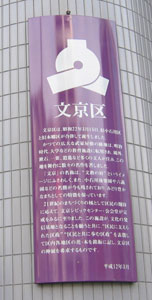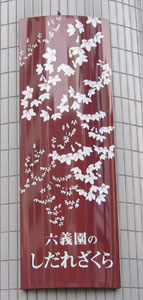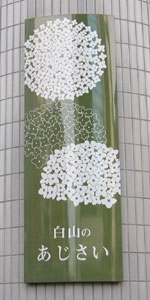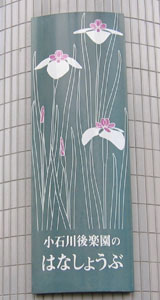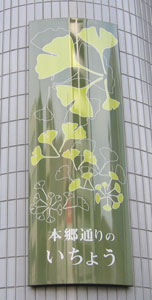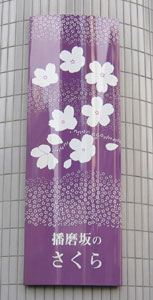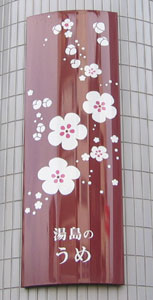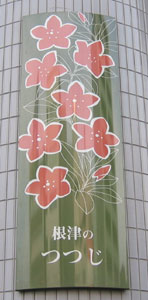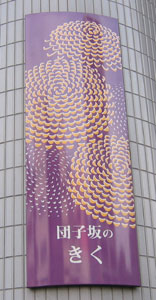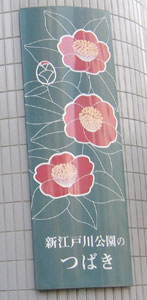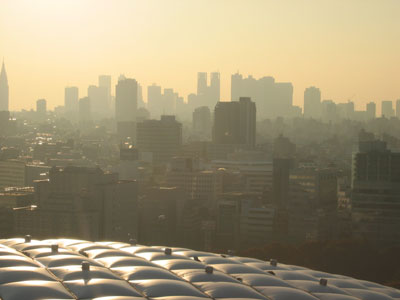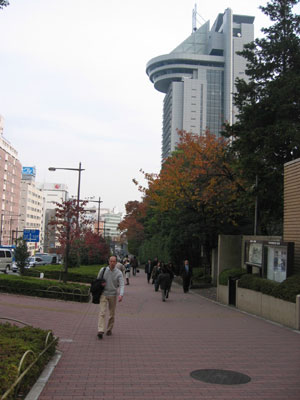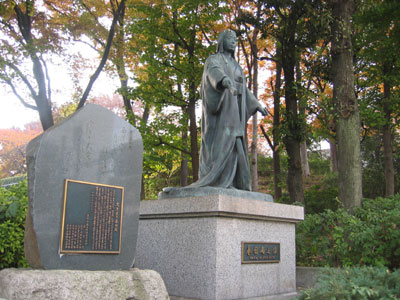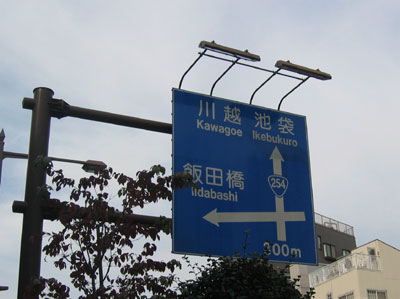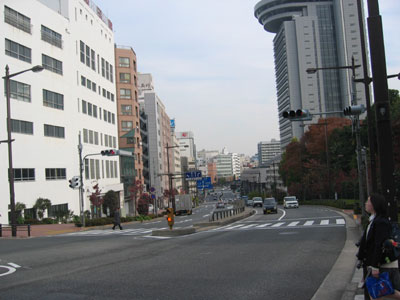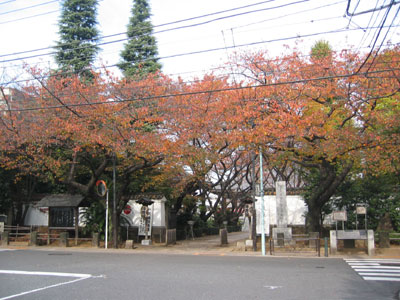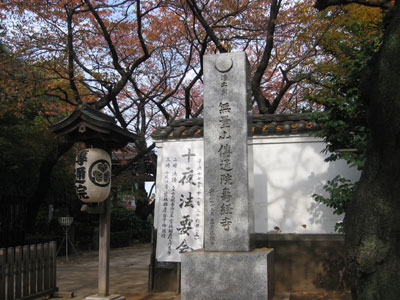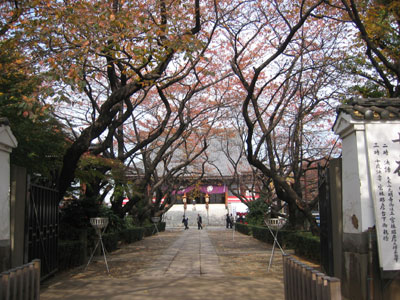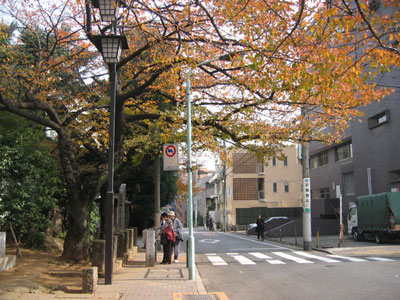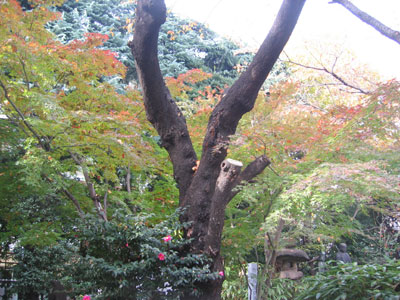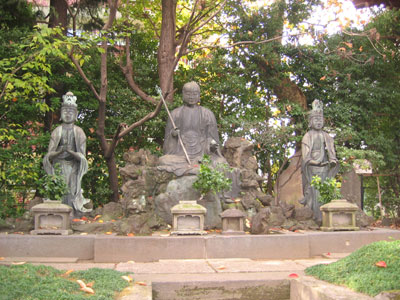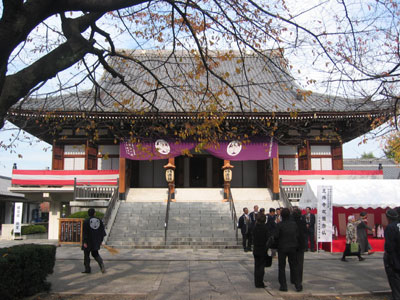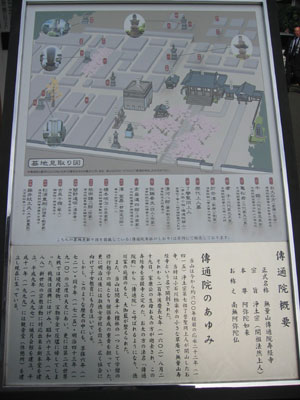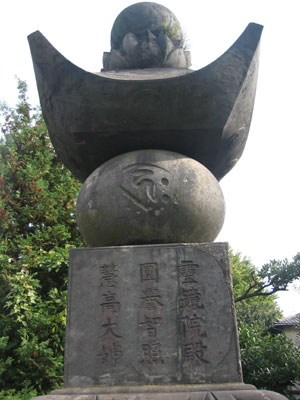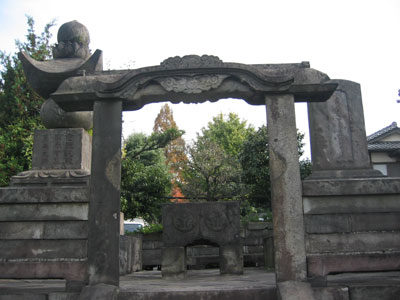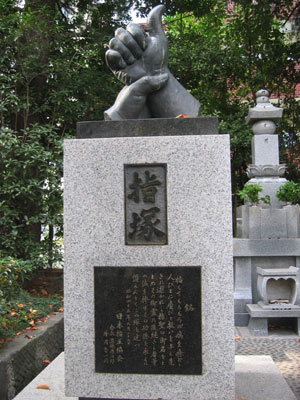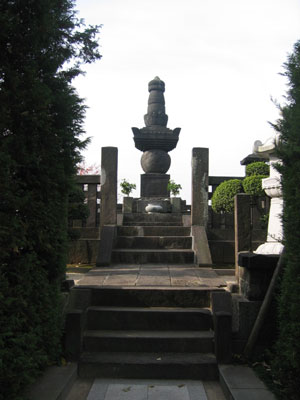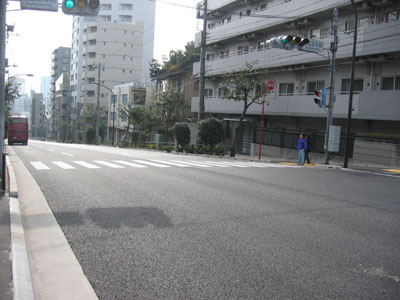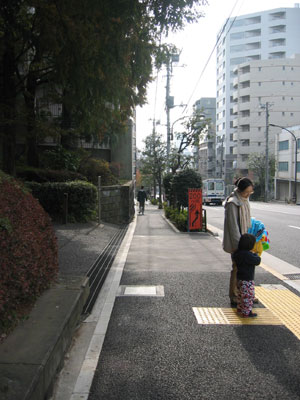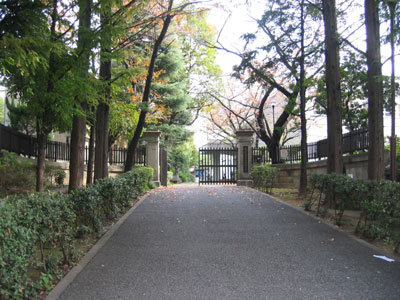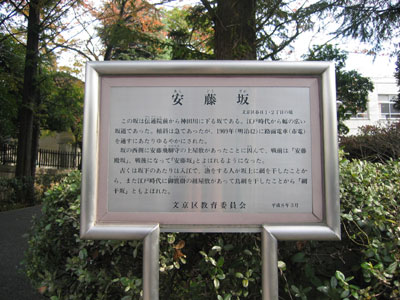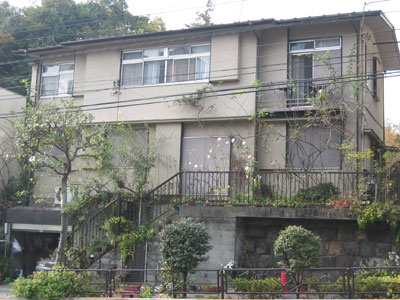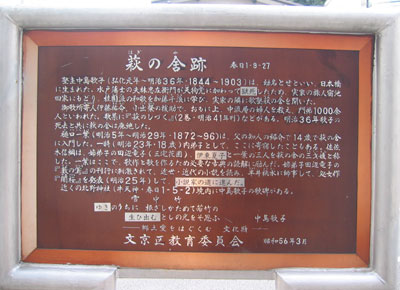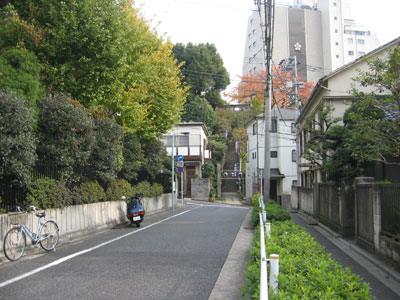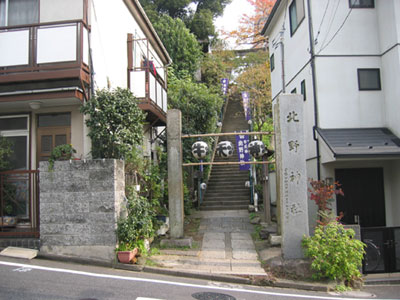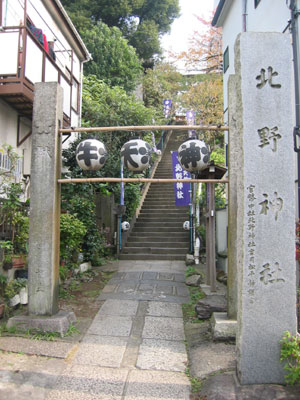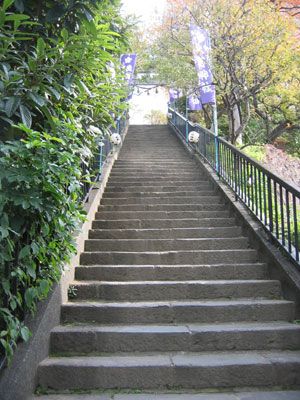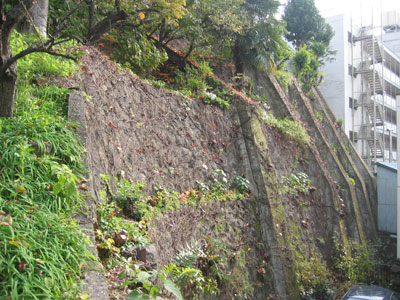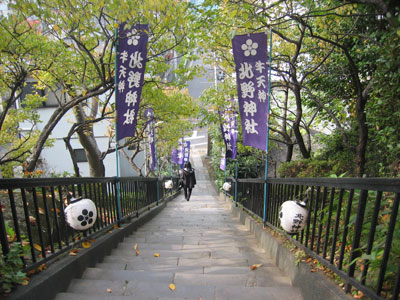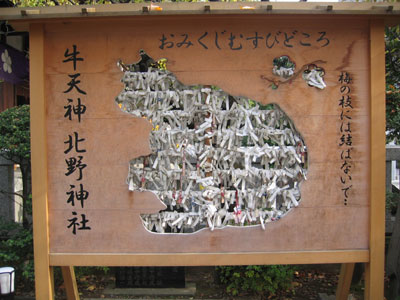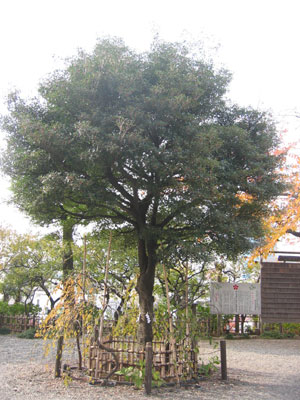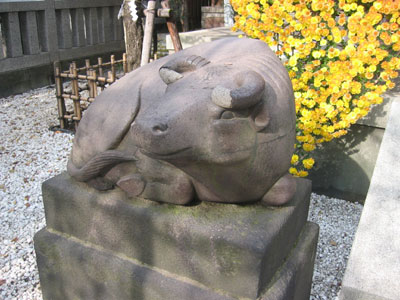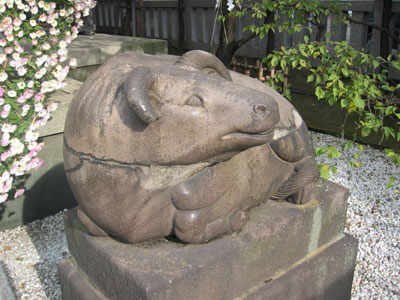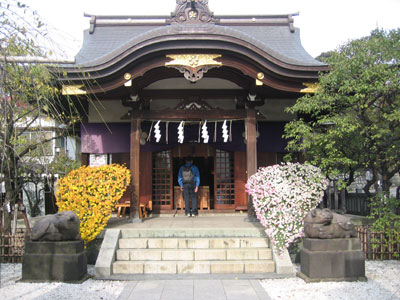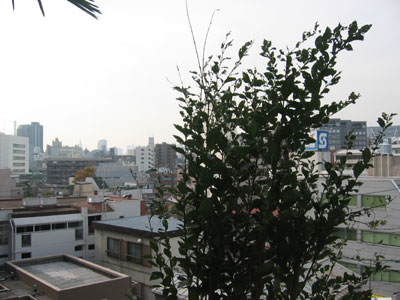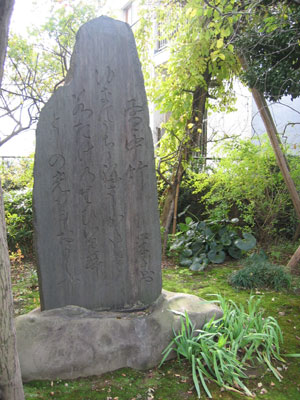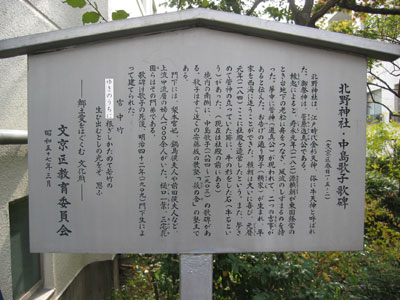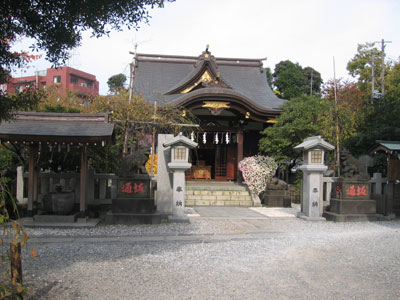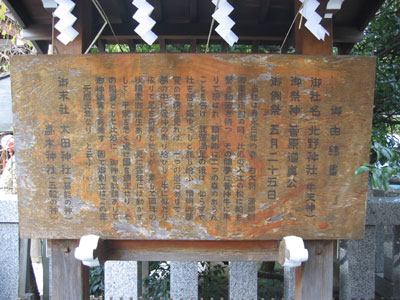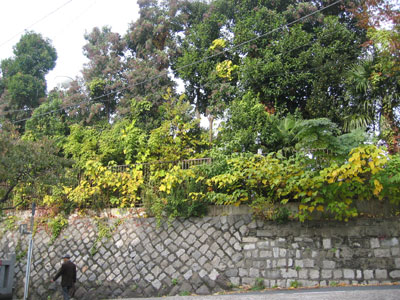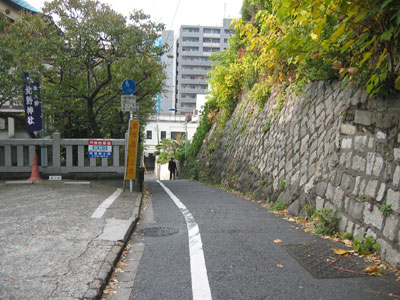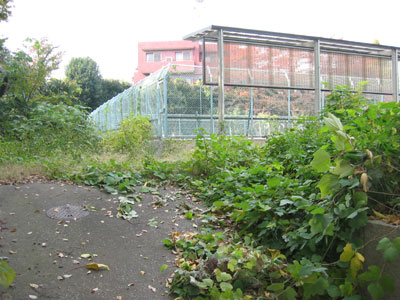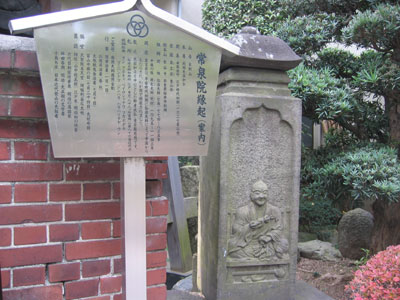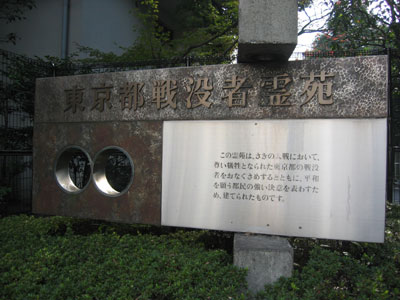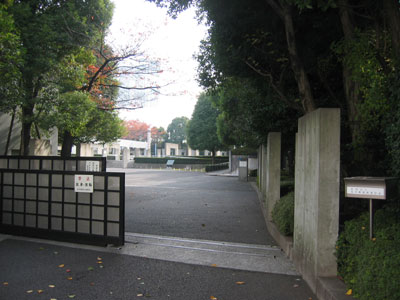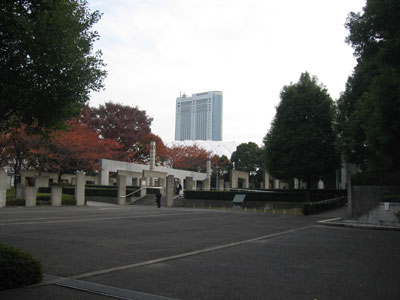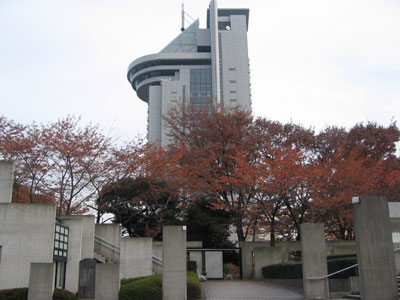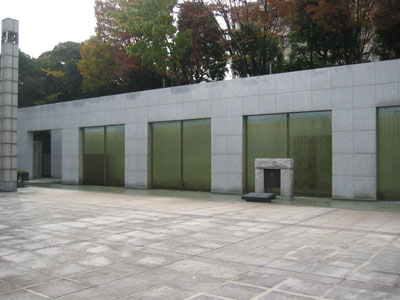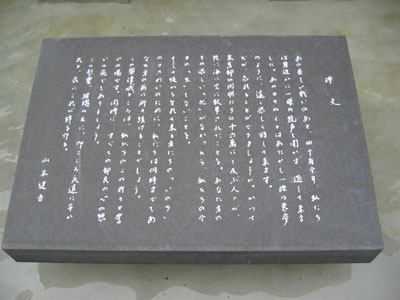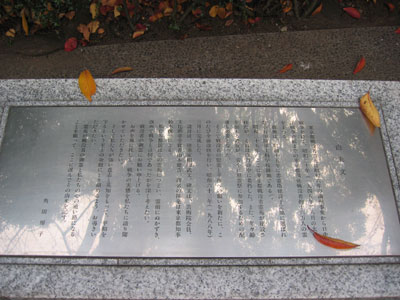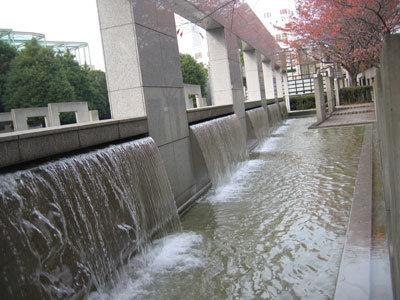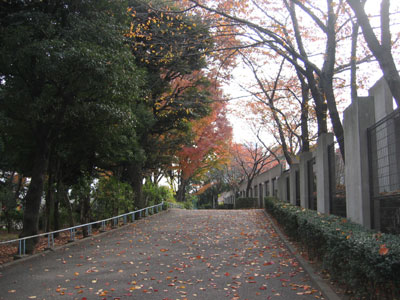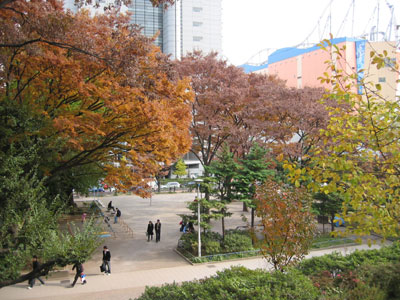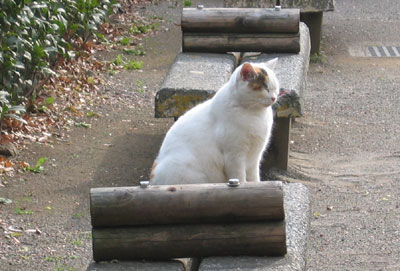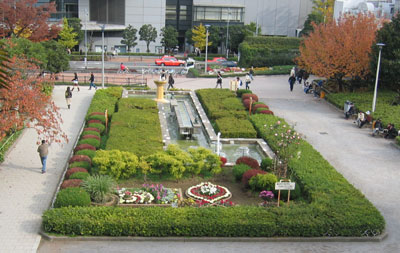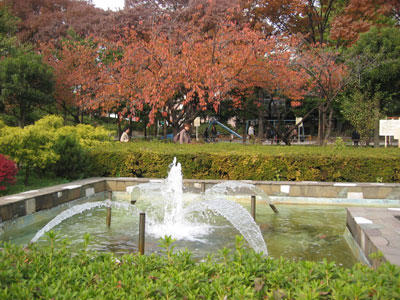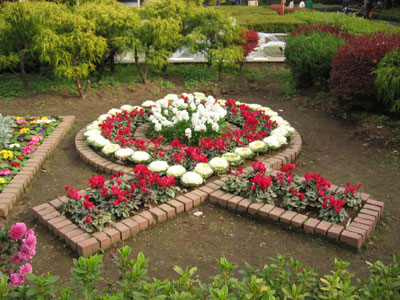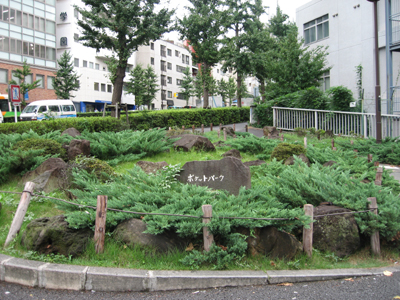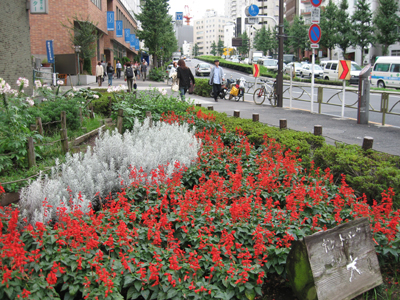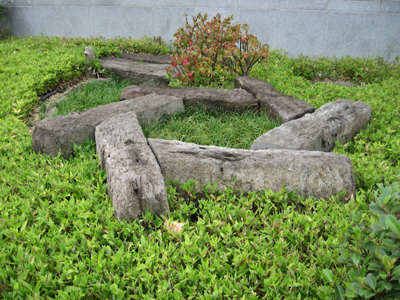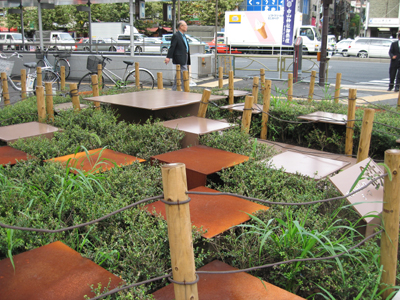|
|
文京シビックセンター(区役所)正面の柱には「区の名花」プレートが貼ってある 。この29階建てのビルが睥睨する街は、一寸の隙もないほど立て込んでいるように見えるが、実際に歩いてみると建物の間を幹線道路から四方八方へ伸びる閑静な通りがつなぎ、樹木に覆われた神社仏閣も点在している。この度私は、先ずシビックセンター前を東西に走る春日通り「富坂」を西の方向に登り、伝通院へ。そこから「安藤坂」を南に下って北野神社へ寄り、再び「富坂」から地下鉄丸ノ内線脇にある礫川公園へ抜けた。何気なく踏み込んだ富坂中腹の「東京都戦没者霊園」では「昭和」の傷跡と出会った。歴史の記憶を辿りながら、晩秋の街を歩く。 On the facade columns of Bunkyo Civic Center, there are plates of flowers which Bunkyo Ward is proud of. If you look down from the 29th floor of the skyscraper, towns underneath look just overcrowded; however, once you start warlking, you will find numerous narrow lanes clean and quiet are spreading from main avenues. Old temples and shrines covered with trees are here and there. First I went up Tomi-zaka Slope of Kasuga Avenue in front of Bunkyo Civic Center westward, to visit Dentsuin Temple. Next I went down Ando-zaka Slope to Kitano Shrine. Then I returned to Tomizaka, stopping by Tokyo Metropolitan Memorial Garden for the War Dead, and arrived at Rekisen Park beside Korakuen Station of Marunouchi sutway Line. It reminded me of the devastating scars of Showa Era. Thinking of the history, I took a walk in late autumn. |
|
文京区の「文」の字をデザインした区のシンボルマーク/ The logo of Bunkyo Ward |
Overhanging branches of cherry blossoms in Rikugien Gardens |
Hydrangea of Hakusan Shrine |
Iris of Koishikawa Kourakuen Gardens |
|
Leaves of gingko trees of Hongo Avenue |
Cherry blossoms of Harima-zaka Slope |
Japanese plum trees of Yushima Shrine |
Azalea of Nezu Shrine |
|
Chrysanthemum of Dango-zaka Slope |
Cameria of Shin Edogawa Park |
東京ドームのエアクッション屋根の向こうに立て込んだ町並みと、遠方には新宿副都心の高層建築群を見晴らす。/ Overcrowded city with skyscrapers in Shinjuku viewed beyond the roof of Tokyo Dome Stadium. |
|
「春日通り」富坂。右手は中央大学理工学部。/ Tomizaka Slope of Kasuga Avenue. |
春日局 (1579-1643) にちなんでこの道は「春日通り」と命名された。春日通りを東へ行くと春日局菩提寺「麟祥院」がある。/ This avenue was named after Kasuga-no-Tsubone (1579-1643), a foster mother of Tokugawa Iemitus, the third Shogun, Her grave is in Rinshouin Temple in the east of Kasuga Avenune. |
|
「国道17号と交わる本郷三丁目交差点を境に、『春日通り』池袋方面は国道254号として川越街道に通じる」(ウィキペディア より引用) 。From Hongo 3 Chome, bound for Ikebukuro, Kasuga Avenue is Rout 24, which leads to Kawagoe Highway. (quoted fronm Wikipedia.) |
富坂上より春日町交差点方面を見る。右側の建物が「文京シビックセンター」。/ Looking toward Kasuga-cho Junction from the top of Tomizaka Slope. The building on the right side is Bunkyo Civic Center. |
|
春日通り、安藤坂を北に曲がると突き当たりが「伝通院」。/ When you come to Ando-zaka Slope, turn to the north. Dentsuin Temple is at the end of the street. |
伝通院山門。石柱には「真言宗 無量山伝通院寿経寺」とある。/ The gate of Dentsuin Temple. |
|
桜並木の参道から本堂を望む。/ The main building of the temple viewed from the approach lined with cherry trees. |
山門前で寺の由緒を読む参拝客。/ Visitors reading the biref history of the temple in front of the main entrance. |
|
境内の桜の古木。/ An old cherry tree in the front garden. |
「法蔵地蔵尊」/ Statues in the front garden. |
|
本堂。この日は法会が行われており、信者が集まっていた。/ The main building of the temple. |
墓地の見取り図。/ A map of the graveyard. |
|
二代将軍徳川秀忠長女、千姫(1597-1666)の墓石。/ The tomb stone of Princess Sen (1597-1666), the eldest daughter of Tokugawa Hedetada, the second Shogun. |
千姫の墓所。/ The grave of Princess Sen. |
|
伝通院の直ぐ近くに「指圧専門学校」がある。この像は指圧の先覚者たちを記念するものとのこと。/ "Shiatsu College" is near Dentsuin Temple. This symbolic statue commemorates shiatsu predecessors. |
家康公生母、お大の方(1528〜1602)の墓。/The grave of Odai-no-kata (1528〜1602), Mother of the first Shogun, Tokugawa Ieyasu. |
|
伝通院を背に、安藤坂を南の(神田川)方向へ行く。/ Andzaka Slope southward from Dentsin Temple bound for the River Kanda.. |
穏やかな午後。安藤坂の親子連れ。/ A mother and a child in a peaceful afternoon at Andozaka Slope. |
|
安藤坂中腹にある第三中学校正門。とても静かな奥まったところ。/ A junior high school in the middle of Andozaka Slope. A very quiet place. |
安藤坂の由来(江戸時代には坂の西側に安藤飛騨守の上屋敷があった)を示す案内板。/ A guide plate explaining the origine of Andozaka Slope.There used be an estate of Ando Hidanomori in Edo Era on the westside of this slope. |
|
安藤坂に面した家。かなり急な坂なので腰高に傾斜を利用して作られている。/ A house along the slope. |
歌塾「萩の舎跡」を示すプレート。樋口一葉もここへ通った。/ A plate explaining there was "Hagi-no-ya," a private school for women to learn poetry in Meiji Era., Higuchi Ichiyou, an eminent write of the day, was also coming here. |
|
衛生試験場脇の小径を東に曲がると、突き当たりに細い急階段が見える。/ When you turn eastward at a corner where Sanitary Laboratory is, you'll see the narrow steep steps at the end of the lane. |
家と家の間に、「北野神社」山門がある。別名「牛天神」。提灯がいくつもぶら下がっている。/ Beteen houses are the steps to Kitano Shrine. It has a nickname, Ushi-Temjin. (Literally meaning, "The Shrine of a Bull.") |
|
北野神社(牛天神)へ上る階段。/ Steps to Kitano Shrine. |
両脇には木が茂り、都心にいることを忘れさせる。/ Trees a;long the steps make us forget we're in the central part of Tokyo. |
|
神社の境内は石垣で固められた崖の上。隣にはコンクリートビルが並ぶ。/ The shrine is up on the old stone wall, beside which is a concrete building. |
上から眺めると階段がとても急なことがよく分かる。女の人がゆっくりおりていくところだった。/ Viewd from the top, the steps look very steep. A woman was walking down very slowly. |
|
先ず目についたのがこれ。この神社ではおみくじを梅の枝に結んではいけないらしい。牛形に開いた「結び処」がユニークだ。この神社は鎌倉時代、源頼朝(1147〜1199)が奥州遠征のおりにこの地に休息した際、牛に乗った菅原道真公を夢に見たことから、牛を祀る天神様を建立したとのこと。詳細は「牛天神」ホームページをご参照下さい。/ A unique board with a bull shaped space where visitors are allowed to tie thier paper fortuner. During Kamakura Era, Minamoto no Yoritomo stopped by this place on his way to norhtern countries. He had a dream in which Tenjin (Sugawara -no Michizane appeared riding on a bull and told him that his dream will come true. That's the origine of Bull-worship.) For more information, please visit the website of Ushi Tenjin. |
ご神木の「木斛(モッコク)」。しめ縄が巻かれ、竹垣が囲む。/ A sacred tree, Ternstroemia gymnanthera. |
|
左のなで牛。願い事を念じながらあたまを撫でると御利益があるという。/A Bull on the left side. It is made of natural stone. Feel the head of the Bull with your wish in your mind, and it will be realized, they say. |
右のなで牛。どちらも微かに微笑んでいるように見える。/ A bull on the right side. Both of the bulls seem smiling. |
|
左右に菊花を飾った11月末の牛天神本殿。杖をついた参拝者が拝礼している。/ The main building of Ushi Tenjin. A visitor with a cane was bowing. At the end of Noember, chrysanthemums were placed on both sides. |
高台にある北野神社境内からの眺め。建物が密集している。/ A view from Kitano Shrine on the hill top. Buildings are crammed. |
|
「萩の舎」塾主、中島歌子(1844〜1903) の歌碑。「雪のうちに 根ざしかためて 若竹の 生出むとしの 光をぞ思ふ」/
A poem of Nakajima Utako (1844〜1903), the principal of "Haginoya,"
is engraved on the stone monument. It reads: "In snow roots grow/
Newly born bamboo leaves/ Are shining bright." |
歌碑建立の由来。明治42年(1909) 門下生によって建てられたとのこと。/ A plate explaining the history of Utako's stone monument, which was built by her students after her death in 1909. |
|
北野神社本殿と手水舎。接写し損なったが、この手水舎は菅公昇神1100年を記念して平成14年に奉納された特製のものという。/ The main building and the water basin (for the purification of visitors) especially built in 2004, commemorating the 1000th year of Sugawara Michizane's deification |
北野神社の「御由緒書」。/ A wooden plate describing the origine of Kitano Shrine. |
|
北野神社裏手の石垣。帽子をかぶった男の人が鞄を提げて歩いていく。少し浮世離れしたものを感じた。/ The stone wall behind Kitano Shrine. A man wearing a hat and hanging a bag was walking by slowly. I felt something unrealistic at the scene somewhow. |
男の人が歩いていく道は緩い坂になっている。ちょうどあの急階段と平行に通る道だろう。 このあたりは坂が多い。/ The lane the man went is a moderate slope, may be running in pararell with the steep steps. There are quite many slopes in this area. |
|
草むした中学校校庭のプール付近。/ Grasses are thick around the swimming pool of the junor high school. |
煉瓦塀沿いに歩くと、「常泉院」という小さな寺。地蔵が多数地面に並べられていた。/ A red brick wall lead me to a small temple named "Jousenin." |
|
再び「富坂」に戻って下ると、中腹に「東京都戦没者霊園」がある。/ I returned to Tomizaka Slope and found "Tokyo Metropolitan Memorial Garden of Fallen Soliders." |
門が開いていたので見学することにした。/ I decided to visit the place. |
|
老朽化した旧霊園に代わって、この霊園は1988年に「小石川陸軍工科学校の跡地」に建設された。霊園は「昭和六年の満洲事変から日中戦争を経て、昭和二十年(1945年)八月の太平洋戦争終結までの東京都関係戦没者約十六万人の霊をまつる」という。/ This memorial garden was newly established in 1988. Here in this site was once Koishikawa Techinical School of Japanese Army. The explanation of the garden says it commemorates "160,000 soldiers who came from Tokyo and died during wars in 1931-1945." |
左は遺品・記念品を展示する建物。正面に聳えるのは文京シビックセンター。/ On the left side is a building exhibiting goods and materials related to the dead and the wars. The skyscraper in front is Bunkyo Civic Center. |
|
鎮魂碑は流れ続ける人工の滝に囲まれている。人気のない霊園に水音だけが響く。/ The central memrial plate is surround with artificial waterfalls. The incessant sound of water is the only thing echoling in this vacant garden. |
山本健吉によってしたためられた碑文。これも水の中に置かれている。/ The epitaph written by Yamamoto Kenkichi. This plate is placed in water. |
|
角田房子による霊園「由来文」。/ A plate explaining how this memorial garden was established. Written by Tsunoda Fusako. |
水は流れ続ける。/ Water keeps falling. |
|
右手が「東京都戦没者霊園」。左側は礫川公園。静かに落ち葉が舞う。/ The right side is "Tokyo Metropolitan Memorial Garden of Fallen Soliders" and the left side is Rekisen Park. |
礫川公園高台から広場を見下ろす。この高度差が富坂の傾斜を物語る。/ The plaza viewed from the highest point of Rekisen Park. It shows the height and the angle of Tomizaka Slope. |
|
公園のベンチ、一人分を占領して座る猫。側によっても逃げなかった。/ A cat sitting on the bench occupying one person's space. It did not run away when I appropached it and took a photo. |
礫川公園中央花壇と噴水。かつてこの場所はただの広場で集会に使われていたと記憶する。それはもう幻の世の出来事となったのだろうか。(今も現役と聞くこともある。)/ The flowerbed and the fountain in the center of Rekisen Park. Once there was nothing like these and it was just an open space where crowds of people gathered for meetings. The memory is fading away now in the realm of illusiotn. (Sometimes I think I've heard this is the place to start a demonstration march.) |
|
礫川公園噴水。ここはシビックセンター前庭の役目も果たすという。/ A fountain of Rekisen Park, which is said to play the role of the front garden of Bunkyo Civic Center. |
これは何の形?そうです、文京区のロゴマーク。ということで、短い散歩は振り出しに戻りました。/ Do you remember this mark? Yes, it's the logo mark of Bunkyo Ward. Here we've come back to the starting point of this short walking. |
|
シビックセンター下、春日通りと白山通り交差点角ポケットパークその1「石」。/ "A pocket park" symbolizing Stones in a corner of Kasuga-Hakusan Crossing just besed Bunkyo Civic Center. |
シビックセンター下、春日通りと白山通り交差点角ポケットパークその2「木」。/ "A pocket park" symbolizing Trees in a corner of Kasuga-Hakusan Crossing just besed Bunkyo Civic Center. |
|
シビックセンター下、春日通りと白山通り交差点角ポケットパークその3「水」。/ "A pocket park" symbolizing Water in a corner of Kasuga-Hakusan Crossing just besed Bunkyo Civic Center. |
シビックセンター下、春日通りと白山通り交差点角ポケットパークその4「鉄」。/ "A pocket park" symbolizing Iron in a corner of Kasuga-Hakusan Crossing just besed Bunkyo Civic Center. |
関連リンク: 本郷界隈「春日通り」から / cf: Kasuga Avenune, Hongo
